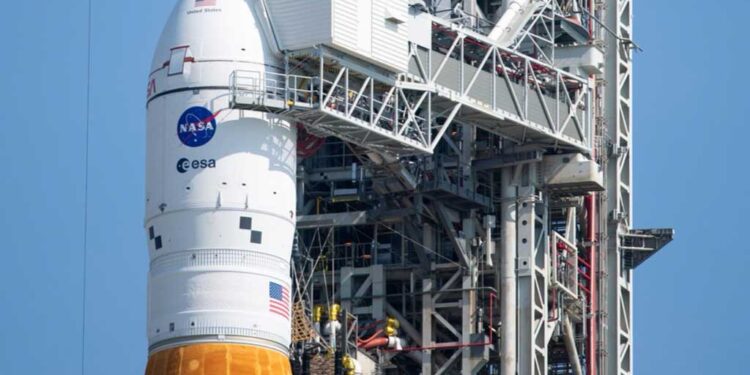Agencies-Gaza post
“This is our land”… U.S. competes China over moon
“We want to go to the south pole (of the moon), which is where the resources are,” especially water in the form of ice, said NASA chief Bill Nelson. “We don’t want China to go there and say ‘This is our land’.”
Amid preparations to launch the new giant rocket made by NASA to the moon, Bill Nelson said, “This mission carries the dreams and hopes of many people,” adding, “We are now the Artemis generation.”
The launch of the new giant rocket made by NASA to the moon is likely to be delayed on Monday, after a series of technical problems encountered during preparations and weather-related complications during the complex preparations for the spacecraft prior to the start of this first test mission.
It was scheduled to take off at 08:33 am (1233 GMT) from launch pad 39B at Kennedy Space Center in Florida, USA, on Monday.
But a NASA live video commentator said it was “highly expected” that the launch would not happen at this time. The launch window extends two hours, leaving room for maneuver, and no new launch date has been set.
The filling of the tanks had begun with a delay of about an hour, due to the high risk of lightning in the middle of the night. The rocket was filled with more than three million liters of hydrogen and ultra-cold liquid oxygen.
Also, around 3:00 am local time, a possible leak was detected while filling the main layer with hydrogen, which led to a temporary halt of operations. After testing, operations have resumed normally, with teams on site continuing to closely monitor the situation.
At about seven in the morning local time, a new problem was considered, which was that one of the four RS-25 engines, under the main layer of the missile, could not reach the required low temperature, which is a necessary condition for its operation.
The orange and white SLS rocket, which is 98 meters high, will not be able to take off in the event of rain or thunderstorms.
The countdown was halted as teams worked to redefine a plan of action.
If canceled Monday, the next possible take-off date is September 2nd.
Between 100,000 and 200,000 people are expected to attend the parade, including US Vice President Kamala Harris.
Half a century after the last “Apollo” flight, the “Artemis 1” mission would herald the launch of the American program to return to the moon, which is supposed to allow humanity to later reach Mars on the same craft.
The unmanned Orion capsule will be launched into orbit around the moon, to verify that the vehicle is safe to transport future astronauts, including the first woman and the first people of color to walk on the moon’s surface.
“This mission holds the dreams and hopes of many people,” NASA Administrator Bill Nelson said last weekend. “Now we are the Artemis generation.”
In a sign of the changes taking place, NASA’s first director of launch operations, Charlie Blackwell Thompson, will give the final “go” signal. Women represent 30% of the workforce in the launch rooms, after their number was limited to one woman on the “Apollo 11” mission.
Two minutes after liftoff, the thrusters will return to the Atlantic Ocean. After eight minutes, the main layer will separate as well. Then, about an hour and a half later, a final push into the upper layer will put the capsule on its way to the moon, taking several days to get there.
The mission mainly aims to test the capsule’s heat shield, which will return to the Earth’s atmosphere at a speed of 40,000 kilometers per hour, and a temperature equivalent to half the temperature of the sun’s surface.
Instead of astronauts, the spacecraft carries stereoscopic displays, which are equipped with sensors that record vibrations and radiation levels. Small satellites will also be deployed to study the moon or even an asteroid.
The capsule will reach 64,000 km beyond the moon, farther than any other spacecraft capable of transporting humans so far.
A complete mission failure would be devastating for this massive missile ($4.1 billion per launch, according to a public review) that has been delayed by several years (after Congress ordered the mission in 2010 to an initial launch date in 2017).























